An independent project monitoring wastewater in 46 locations in Bengaluru has interesting data that could potentially work as a city-wide early warning system for COVID-19 outbreaks. The platform called Precision Health has been actively collecting and analysing wastewater samples from Bengaluru since April 2021 to detect and monitor the presence of SARS-CoV-2.
The data from Precision Health mirrors the peak of the second wave in May, and the recent uptick in cases, in terms of the percentage of samples that were positive for SARS-CoV-2. The current findings from wastewater testing show that at the ward level, around half the wards are showing an increasing trend. This also seems to portend a further increase in per-day cases in the coming weeks.
What is wastewater surveillance and how does it help monitor COVID?
Wastewater surveillance is the process of monitoring the wastewater (sewage) generated by a population to look for contaminants. In the current scenario, the most pertinent example would be looking for the SARS-CoV-2 virus in the sewage of a population.
Read more: COVID-19 second wave: Why no one saw this coming
Even though viruses cannot survive outside of their host, this method looks for RNA fragments in the collected wastewater. It has been recognised by the WHO as an important tool to monitor the presence of viruses in populations and alert authorities about any new outbreaks. Russia, for example, instituted a wastewater surveillance program in 1996 for monitoring enteroviruses, the most prominent of which is the poliovirus.
For COVID-19, wastewater epidemiology using qPCR and RNA-Seq is being used by various countries, like Canada, the UAE, China, the Netherlands, Singapore and the United States, as a complementary method to assess the load of SARS-CoV-2 virus in populations. Given that it uses RNA sequencing, it can also be used as an early warning system to monitor for newer variants and alert the authorities when mutations that could be of interest are seen.
A Bengaluru-based initiative for wastewater surveillance
In India, at the policy level, wastewater surveillance is now becoming part of the Covid-19 strategy. The Government plans to roll out a plan through the Indian SARS-CoV-2 Genomics Consortium (INSACOG), a network of 35 genomics laboratories. Earlier, Tamil Nadu based SRM Institute of Technology created a set of standard operating procedures for wastewater surveillance which the NITI Ayog adopted and passed on to the States and Union Territories for consideration. However, states couldn’t move ahead with these plans as the second wave hit at the same time.
Precision Health Initiative, in Bengaluru, is a joint effort by individuals and organisations under the umbrella of #COVIDActionCollab. It is a wastewater surveillance platform that aims to promote systematic wastewater surveillance for early detection and prevention of disease outbreaks by creating an early warning sewage surveillance system.
Read more: Op-ed: Why cities must strive for equality to fight COVID-19 effectively
The team has been working with BBMP, providing valuable information on the trends in COVID presence in the city. This helps BBMP’s COVID War Room that includes both experts and officials in spotting early warnings of COVID infections in the city.
Precision Health has been testing samples from open canal sites. A parallel project by the Tata Institute for Genetics and Society (TIGS) and National Center For Biological Sciences (NCBS) along with BWSSB is testing samples from BWSSB’s Sewage Treatment plants.
Their method of operation is to collect samples twice a week from identified sites. Lab technicians test the samples with RT-qPCR and RT-ddPCR to check for presence or absence of SARS-CoV-2. If the virus is present, the sample is retested for the concentration of virus which is known as viral load (defined by M/liter). The viral load is then compared to the previous sample result to present a trend of viral load over time.
They also do Genomic Surveillance (GS) to track mutations in the virus. Genomic sequencing of SARS-CoV-2 helps to track viral evolution, measure host immune responses and plan mitigation measures. Genomic sequencing has been initiated by them from June 2021.
The main benefit here is that genomic surveillance of a large number of individual samples is very expensive. GS using sewage could cost a fraction of the amount, yield the same information and give a representative picture of an entire community.
What does Bengaluru’s wastewater surveillance data show?
April 2021 was at the start of the second wave of Covid-19 and we saw massive increases in the per day cases, peaking only in early May. Since then, the daily cases have been falling, eventually averaging less than 200 since October 2021 with an uptick being seen the past few weeks.
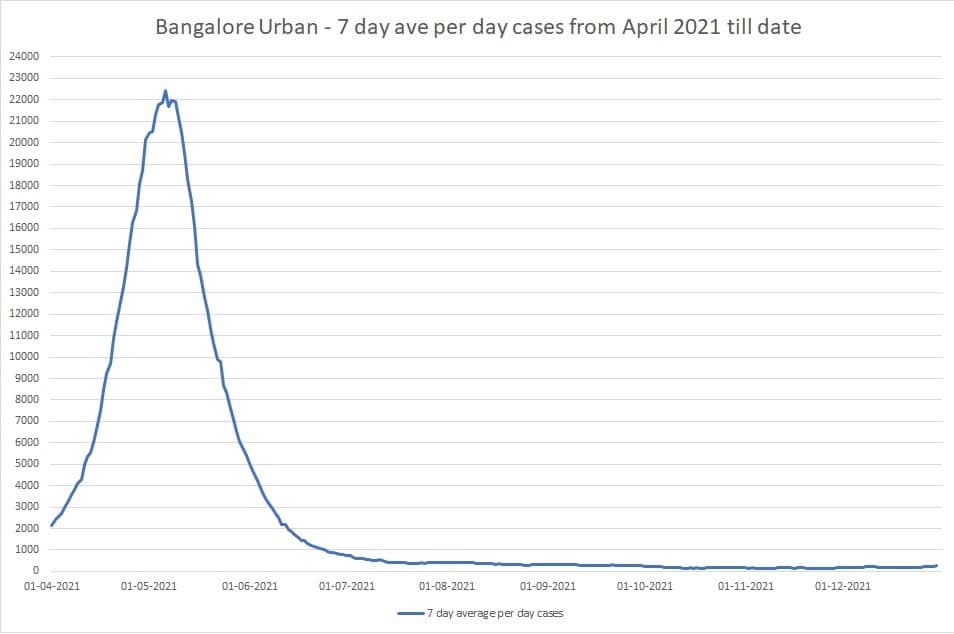
The data from Precision Health also seems to mirror this in terms of the percentage of samples that were positive for SARS-CoV-2.
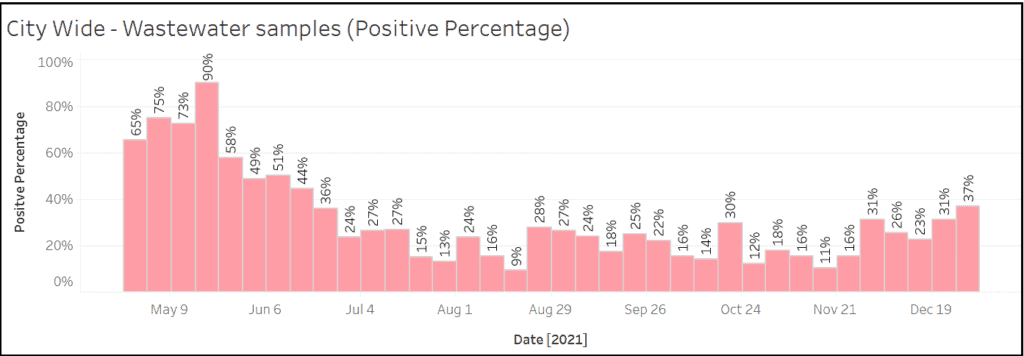
The viral load marker also paints a similar picture with the peak in April, a quiet period the past few months, and an uptick from recent weeks.
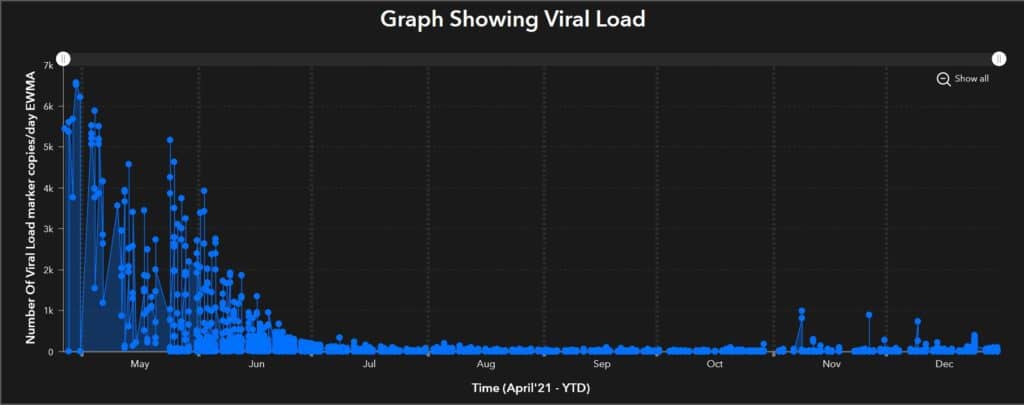
Since early December there seems to be an uptick in cases. The 7-day average from November 1st to Dec 29th confirms that.
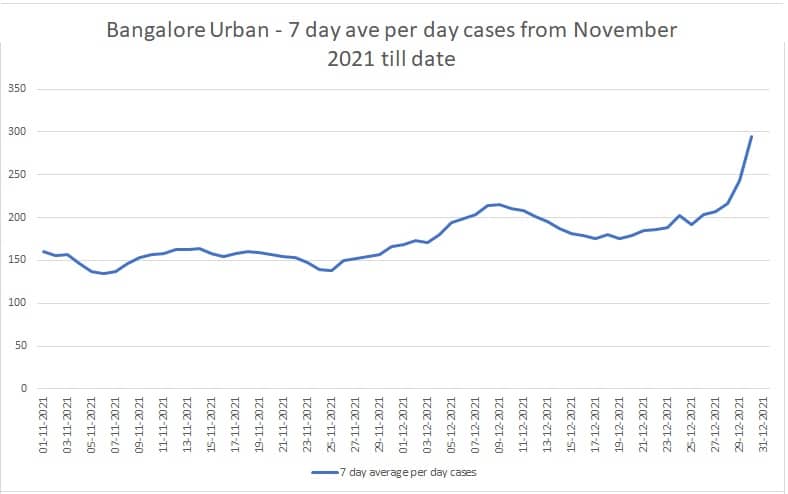
The picture painted by sewage analysis is similarly concerning.
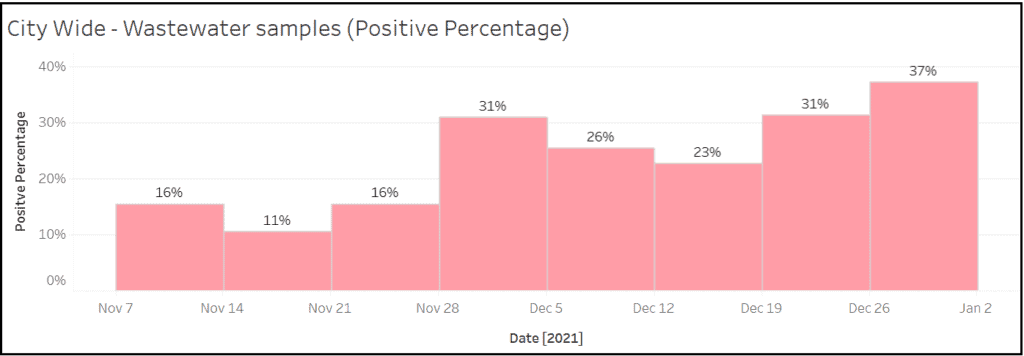
The viral load marker is also showing an increased number of samples with higher viral load. This seems to portend a further increase in per-day cases in the coming weeks.
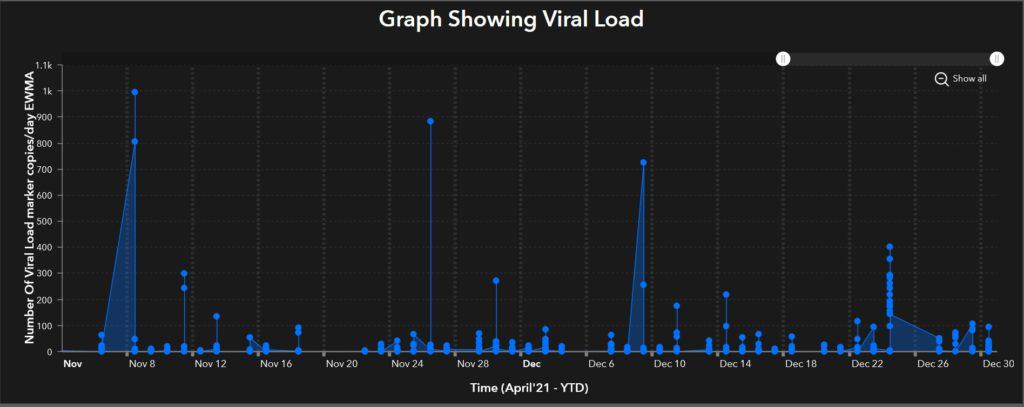
Spotting trends at a neighbourhood level
One of the important use-cases for wastewater surveillance is targeted testing and ability to narrow clusters down to ward or even apartment complex levels, without the need to test many individuals, which is also expensive.
For example, the current findings from wastewater testing show that, of the 45 locations, 23 locations are showing an increasing trend over the past two weeks, as against 10 locations which are showing a decreasing trend. One location has not seen any change, while 11 locations have consistently shown zero viral load.
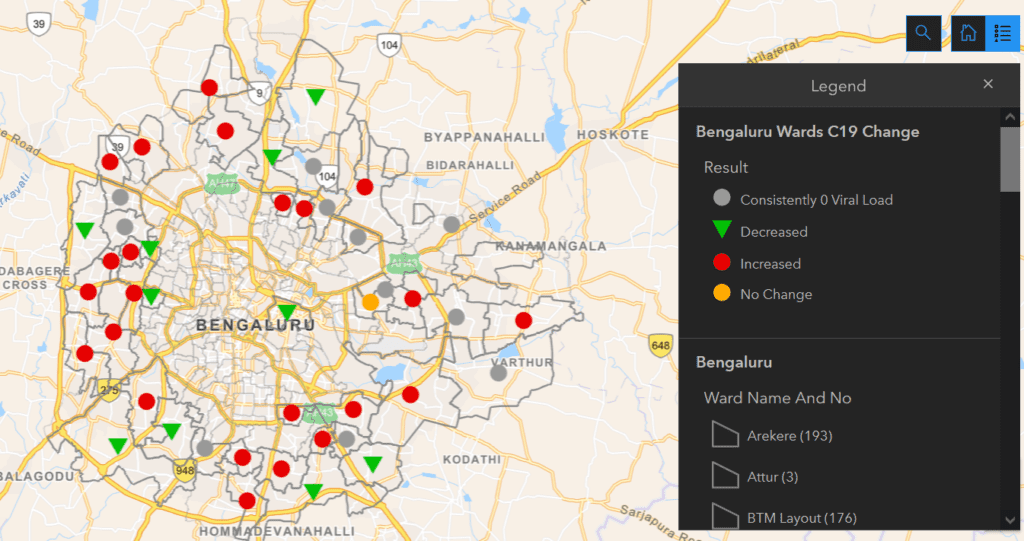
What does genomic surveillance say?
Since April 2021, the Delta variant has been predominant across the globe, and has been the main variant in 192 countries. The data in Bangalore, as of December 26th 2021, also suggests the same.

Precision Health has specific criteria, including viral load thresholds, to select a sample for genomic sequencing. As positive samples are yet to meet these criteria, Omicron is yet to be to be considered as detected in the samples.
What it means going forward
There seems to be a marked increase in the levels, in both the Dept of Health and Family Welfare data, and the data from sewage analysis.
Whether this increase is driven by Omicron is not entirely clear yet. At least in Bengaluru, the analysis from sewage has not revealed any presence of Omicron yet. But this does not mean Omicron will not have a role to play in the coming wave.
The Union Government has announced booster shots for the elderly with comorbidities and for children of age 15-18. It is likely the booster coverage will include more age-groups going forward. As we enter 2022, what we need to do remains mostly the same: Get vaccinated (or ‘boostered’ when your turn comes), wear masks, avoid crowds, and focus on ventilation.
At the policy level, the current testing strategy is almost entirely based on RT-PCR and RAT tests. There are plans being rolled out to include wastewater surveillance in this mix. If implemented well, this will not only be cheaper, but will also be more effective in identifying micro-clusters and detecting new variants.
Going forward, this strategy can also be applied to other viral diseases, like Dengue and Chikungunya, and help target mitigation measures better. At a general level, wastewater epidemiology can also help provide insights on various parameters pertaining to the health of the population like antibiotics usage/abuse.
I hope that Bengaluru will beat all other cities in this endeavour and become the centre to spread this method of monitoring and its interpretation.